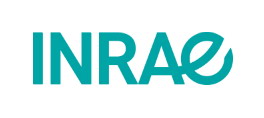Lors du Vendredi Découverte du vendredi 16 mai 2025, Hind Oubanas nous a présentéle sujet suivant : SWOT - Discharge from Reach to Basin Scale

Résumé : Modeling river discharge at a global scale is vital for understanding water fluxes, managing water resources, and mitigating flood risks. Traditionally, hydraulic and hydrological models have depended on in-situ observations collected at strategic points along major rivers and their tributaries. These ground-based measurements are essential for calibrating and validating models, ensuring that the simulated discharge closely aligns with observed river flows. However, river gauges have inherent limitations, including sparse spatial coverage and a decline in availability due to practical, economic, or political factors.
Remote sensing has emerged as a transformative tool to address these challenges, providing systematic observations over extensive regions. Various methods have been developed to estimate river discharge using satellite data, typically requiring calibration with ground-based data or models. The launch of the Surface Water and Ocean Topography (SWOT) satellite mission in December 2022 marked a significant advancement in surface hydrology, particularly for discharge retrievals. SWOT employs two Synthetic Aperture Radar antennas to provide the first-ever concurrent two-dimensional, high-resolution measurements of water surface elevation and extent in rivers, lakes and wetlands. These measurements can offer a new perspective on how surface water is monitored and quantified, with initial results suggesting that SWOT is capable of meeting and even exceeding its science requirements. Among the products of the SWOT mission is a river discharge estimate, the first global discharge mission product. It is produced through operational discharge estimation algorithms that leverage the unique capability of the satellite to simultaneously observe river water surface elevation, width, and slope. Discharge algorithms solve hydraulic inverse problems at the reach scale, approximately every 10 km, as defined by the SWOT River Database hydrographic network, where the satellite observes the river during each overpass. The wide-swath nature of SWOT offers a fundamentally novel discharge product, providing comprehensive spatial coverage.
In this presentation, we first analyze SWOT discharge product and its spatiotemporal patterns across entire basins, such as the Mississippi, a well-monitored basin, the Congo, a poorly gaged basin and the Mekong, a transboundary basin. We will focus on the discharge algorithm, SIC4DVAR, one of the six official SWOT algorithms, developed by INRAE’s team. We will present the latest available discharge products, discussing their spatiotemporal coverage and the status of validation at the time of the meeting. Our focus will be on the product derived from the nominal orbit with a 21-day cycle, which provides global coverage. Differences between the constrained and unconstrained products will be explored. Preliminary results have also examined the impact of data quality filters on discharge performance, showing that stricter filters bring performance closer to pre-launch expectations. Remaining challenges related to data and algorithms will be discussed.
Next, we extend SWOT discharge's capabilities from the reach to the basin level. The analysis at the basin scale reveals sub-daily coverage of basins from upstream to downstream, with different overpasses capturing multiple tributaries simultaneously, thereby enabling a comprehensive examination of discharge variability in space and time. Next, we enhance large-scale basin discharge estimation by assimilating SWOT reach-scale data into the RAPID river network model. For the Mississippi basin, SWOT observes the basin an average of three times daily, with each overpass covering different rivers and tributaries. This assimilation process leverages SWOT's spatial and temporal coverage to integrate observed and propagated dynamics within a single cycle. Preliminary results indicate that while SWOT directly observes 10% of the basin, assimilation propagates this information to 82% of the basin, including unobserved tributaries. These findings demonstrate that integrating data assimilation, river modeling, and scaling can overcome temporal and spatial coverage limitations, significantly enhancing our ability to estimate basin-scale discharge.






